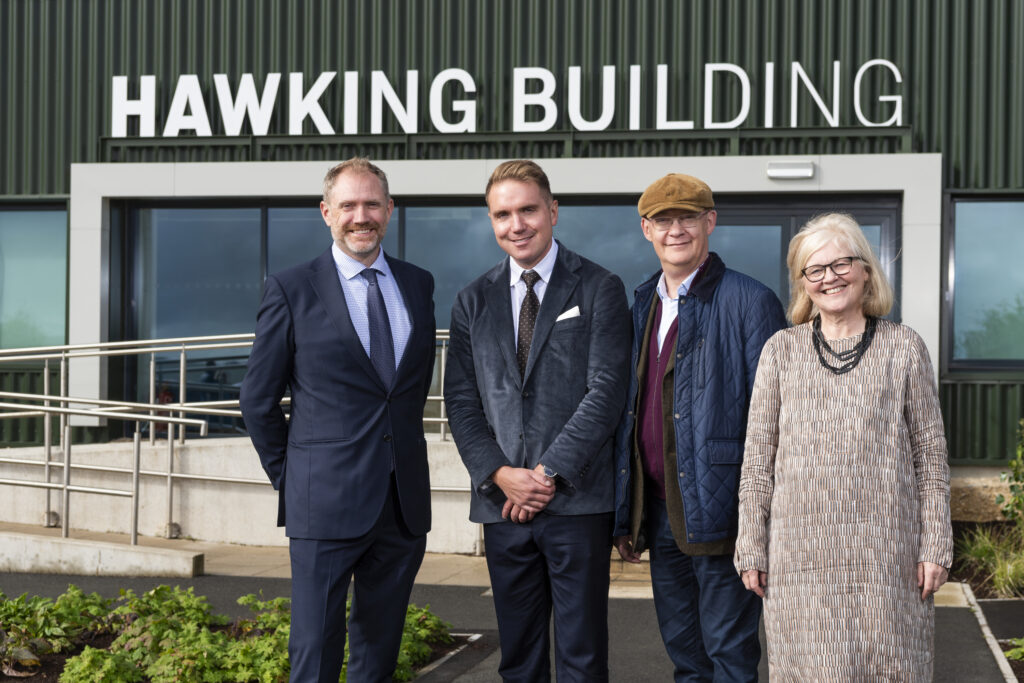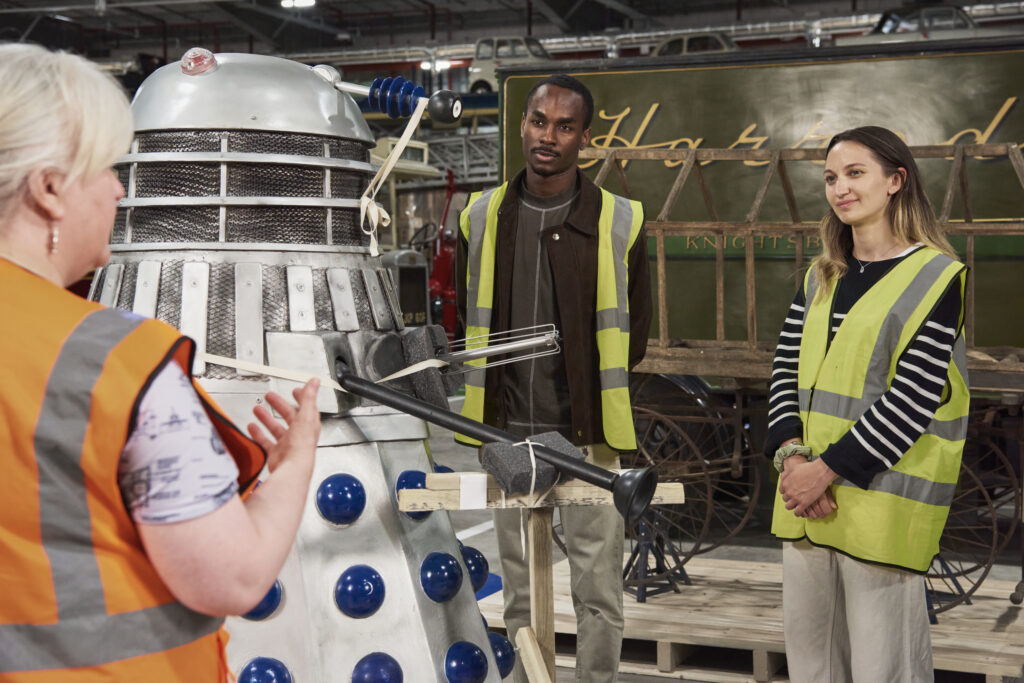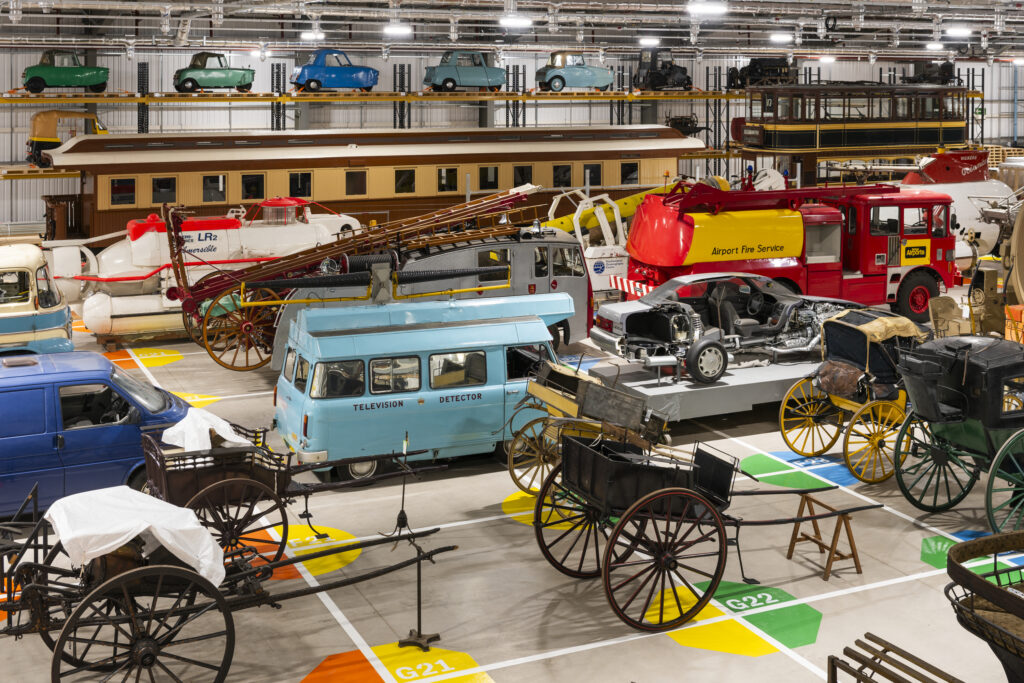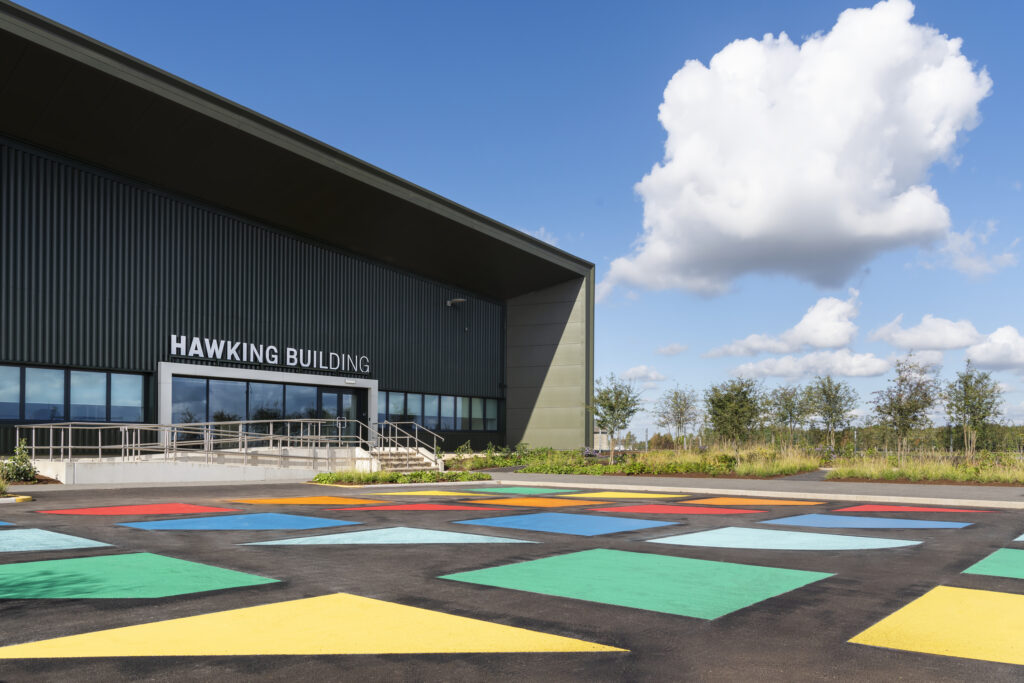The new collection management facility received its official name when it was inaugurated as the Hawking Building this week, in recognition of the lasting impact of Professor Stephen Hawking’s scientific research and public engagement, and his long-standing relationship with the Science Museum Group.
As a child, Hawking drew inspiration from regular visits to the Science Museum. Much later, he lent his communication devices for display, gave lectures and debated Nobel Prize laureates in the museum, and even served as a guide for a day.
In 2021 the extraordinary contents of Hawking’s Cambridge University office were acquired for the nation by the Science Museum Group through the UK Government’s Acceptance in Lieu scheme. More than 1,000 objects, including his communication and mobility equipment, have since been studied and cared for in the Hawking Building, with staff and researchers uncovering the everyday and extraordinary stories within them.
We welcomed his son, Tim Hawking, to mark the occasion where he mentioned how delighted the family was that ‘this magnificent new facility [is named] the Hawking Building.’

The Hawking Building enables the Science Museum Group to better store, conserve, research and digitise our unique collection, while also improving the process of displaying items across our five museums.
Over 300,000 historic objects have been carefully studied, digitised and moved into the new building, in a process that’s taken several years. The large object moves can be seen in this time lapse video:
As it opens for guided public tours, school and research visits for the first time, the Hawking Building will revolutionise public access to the Science Museum Group Collection, ensuring these historic objects continue to inspire future generations.
Visitors will be led by an expert guide on public tours among hundreds of large objects—including a Spacelab 2 X-ray telescope carried into orbit by the US Space Shuttle Challenger.

Later in October we look forward welcoming Key Stage 2 school groups from the local area. These groups will enjoy a live science show about forces, delivered by the Science Museum Group’s Explainers, and take part in a hands-on forces workshop in an outdoor learning space then explore iconic objects in the Hawking Building.
Researchers can apply to visit and see a particular object from the collection for free, hosted in-person or virtually.

The public can already discover more of the Science Museum Group Collection than ever before. Hundreds of thousands of records can now be explored through Science Museum Group’s popular online collection, one of the world’s most extensive online scientific collections. Audiences can not only discover incredible objects but uncover the surprising stories behind them with engaging short films, long-form stories, a podcast, journal and online tools.
With the new name, official launch and first wider public access to the Hawking Building, we took time this week to mark this hugely significant milestone in the transformation of how we care for, access and share our collection with the world.
Guests explored the building, took a closer look at some of the objects from Professor Stephen Hawking’s office, and experienced The Wrong Thing by Bedwyr Williams which was specially commissioned to reflect on our collection’s new home.

Then it was time for us to celebrate among ourselves – hundreds of staff and volunteers, both past and present, have been integral to the successful delivery of the building and increased collection access.
Over the last six years, this hugely ambitious programme has trained a whole generation of museum professionals, while also enabling the Group to take a major steps towards creating a world-leading centre of excellence in collection care, access, and engagement.
The Science Museum Group created the Hawking Building, its new collection management facility at the Science and Innovation Park, thanks to funding from the Department for Culture, Media and Sport and from HM Treasury as part of the £150 million Blythe House Project, which saw collections from the Science Museum Group, the British Museum and the V&A moved from Blythe House in west London into new facilities.
